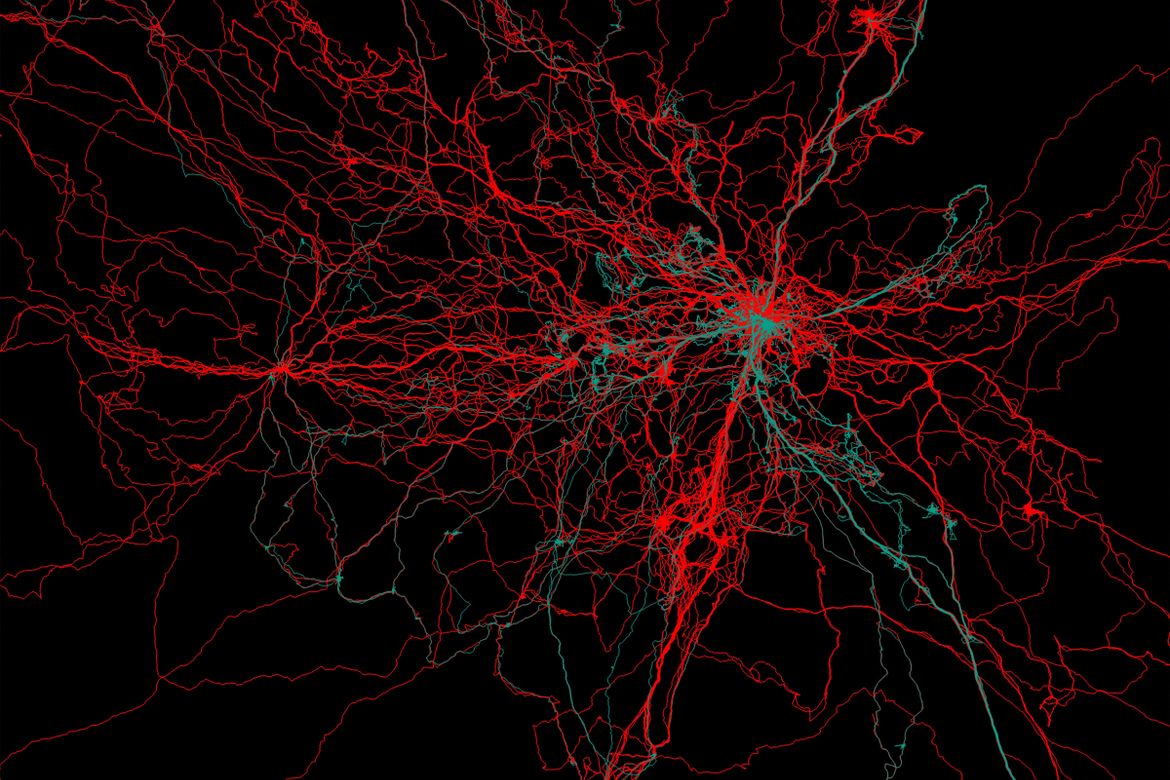
Brian Wood
This digital rendering of GPS data highlights the movements of men (red) and women (blue-green) from one Hadza camp.
A study led by UCLA professor of anthropology Brian Wood yields new insight into the ways gender roles and ecology influence men's and women's patterns of movement through the landscape in which they live. The findings are based on a long-term research project among the Hadza people of northern Tanzania, one of the few remaining hunter-gatherer societies in the world.
Recently published in the journal Nature Human Behaviour, the study has broad implications for understanding the evolution of spatial behavior in humans, as well as for predicting how people may adjust their movements in response to changes in their environment in the future, the authors say.
For the study, the researchers used GPS tracking to test their predictions about spatial behavior among the Hadza based on men's and women's economic roles. They found that Hadza men, who hunt wild game and search for honey, ranged farther, visited more parts of the landscape, traveled along more twisting and turning routes, and were more likely to travel alone. Hadza women, who harvest plant resources, traveled closer to home in larger groups and followed more direct paths to and from resource patches.
Interestingly, the GPS data showed that only a small percentage of the landscape was being visited by both men and women.
"In our data, most of the landscape was effectively gender-segregated," Wood said. "I've spent years living in the Hadza community, following people on their daily foraging trips, yet I was still very surprised by what these GPS data reveal: Men and women inhabit different worlds from a very young age."
Wood and his colleagues conducted the study as part of the long-running Hadza Behavioral Ecology Project. By equipping Hadza participants with small, lightweight GPS devices, the team was able to record 2,078 days of men's and women's movement, tracking their location every five seconds.
"One or two researchers would walk through camp early in the morning as people were rousing," the authors write. "We would greet people at their homes or hearths and hand out GPS devices to be worn during the day."
The data collected allowed the researchers to examine more than 13,000 miles of foot travel, using what is called movement ecology theory, which looks at how individuals and groups move within their environment in search of resources, to predict gender differences based on that travel.
The detailed spatial dataset provides an invaluable record of daily movement and landscape use in a traditional hunter-gatherer society, said Wood, who added that the data could potentially aid research into human mobility as people navigate changing climates and migrate across geographies.
"A corpus of high-resolution spatial data like this has never existed before," Wood said. "It will serve as a critical reference for comparative research into patterns of human movement and social organization across diverse contexts."






